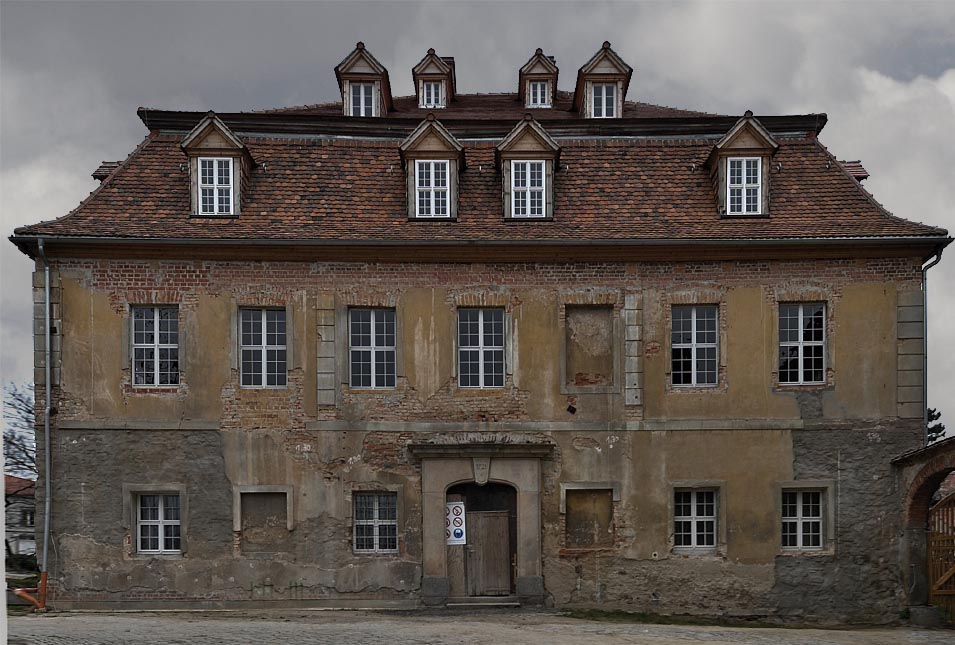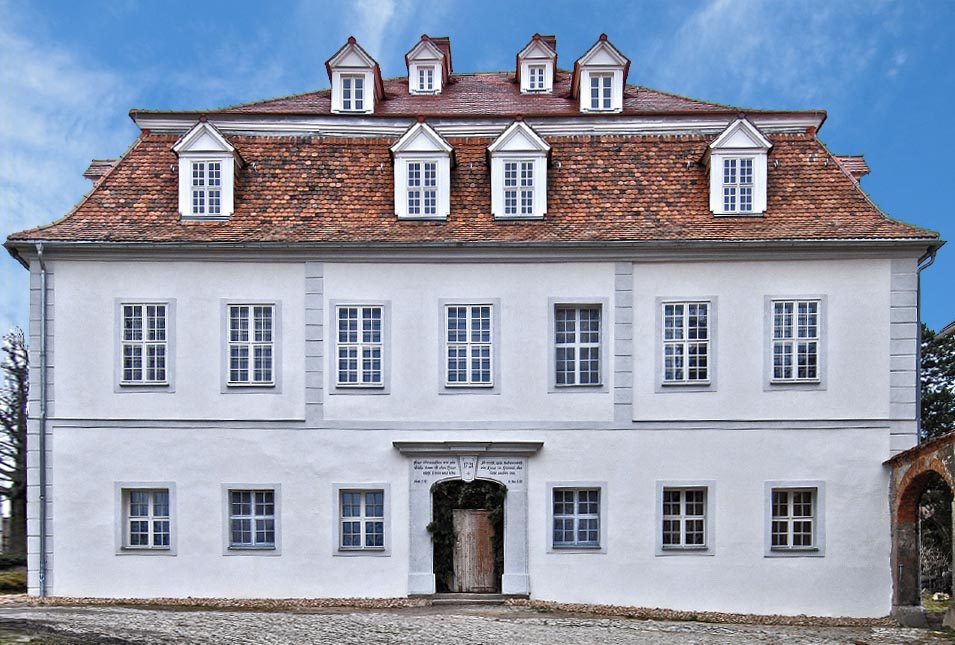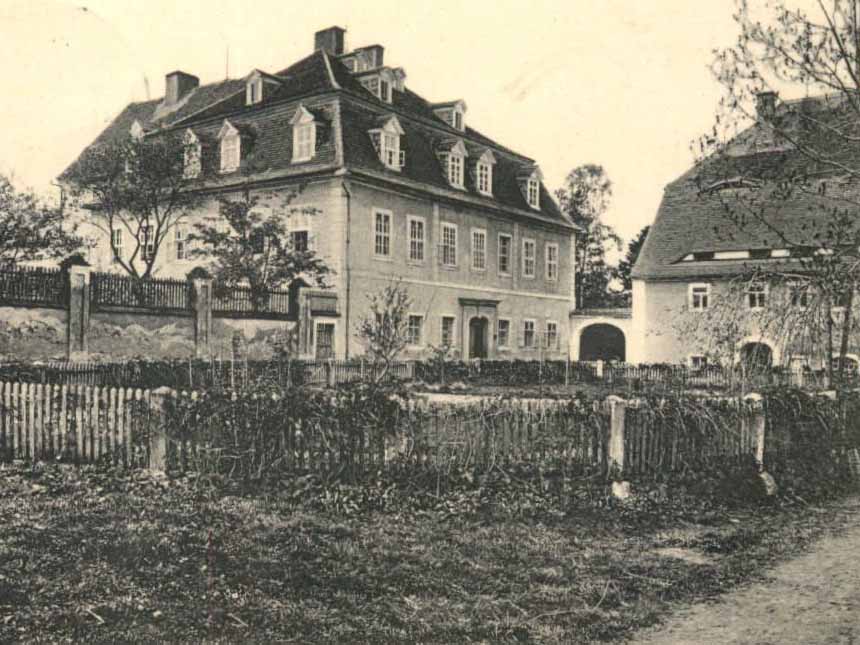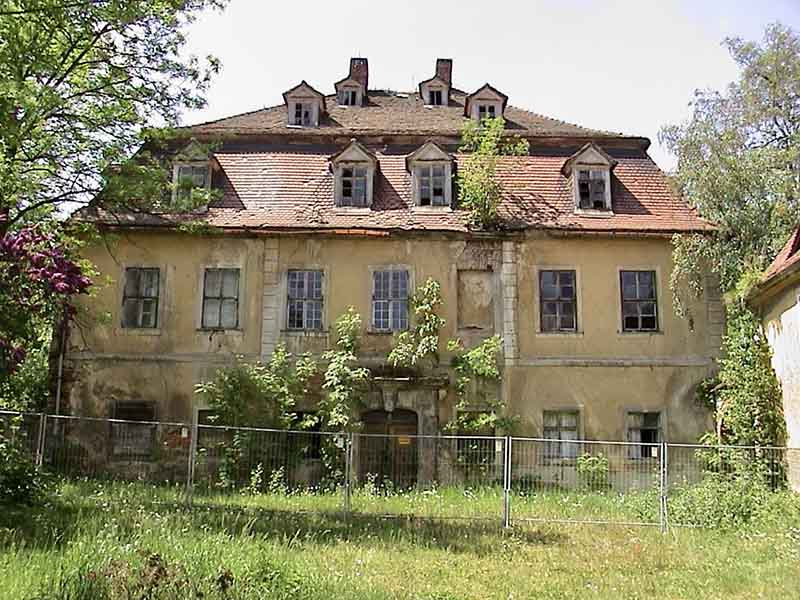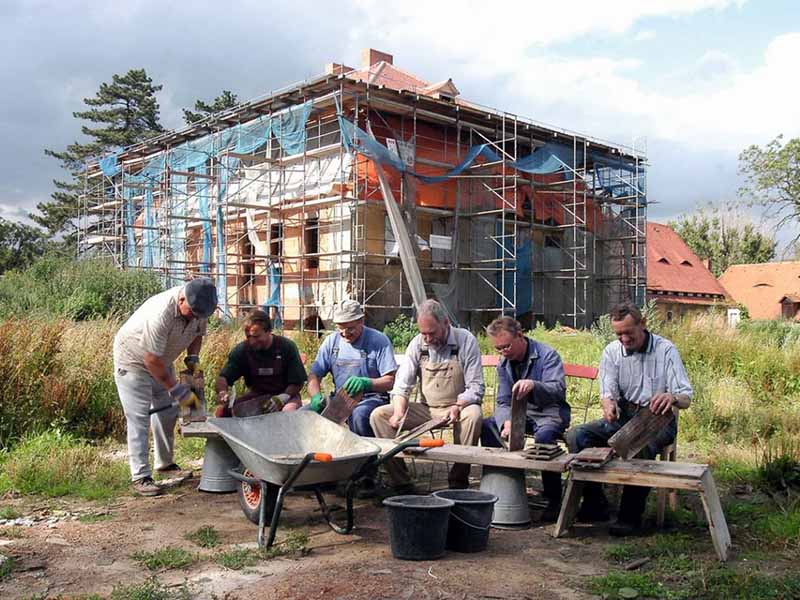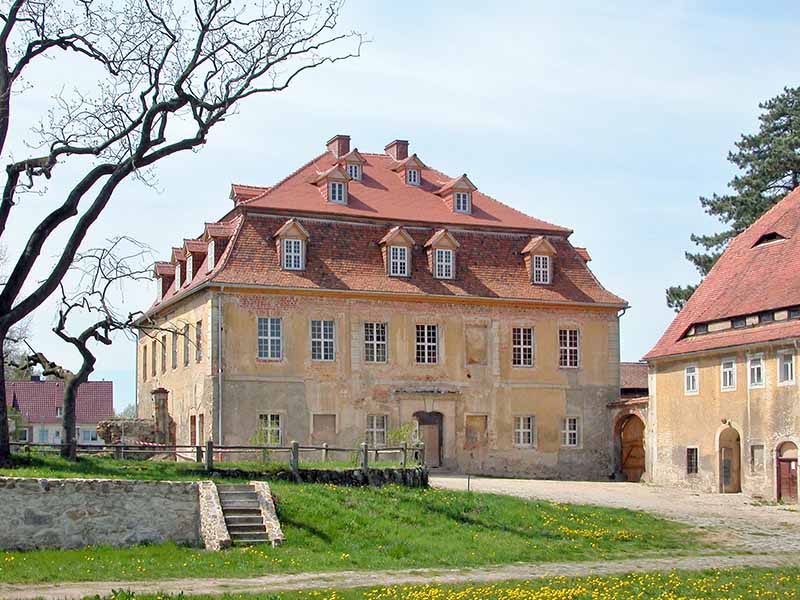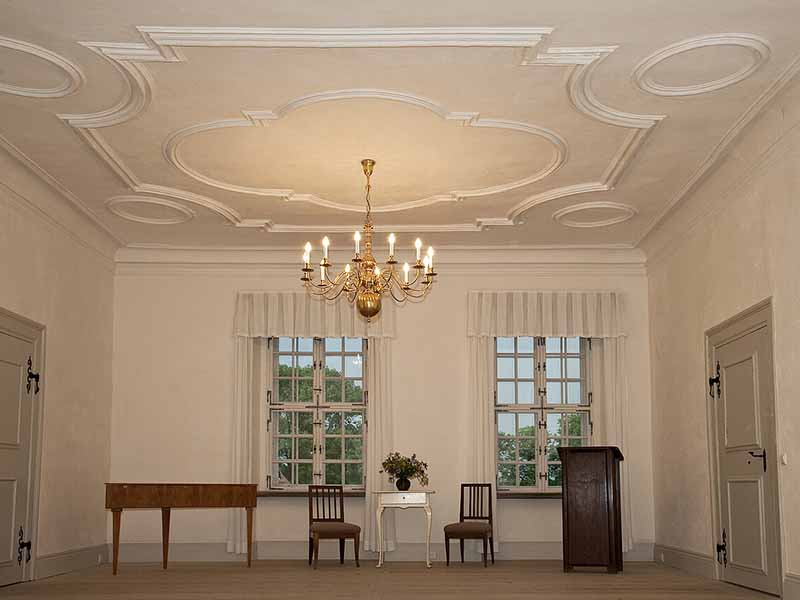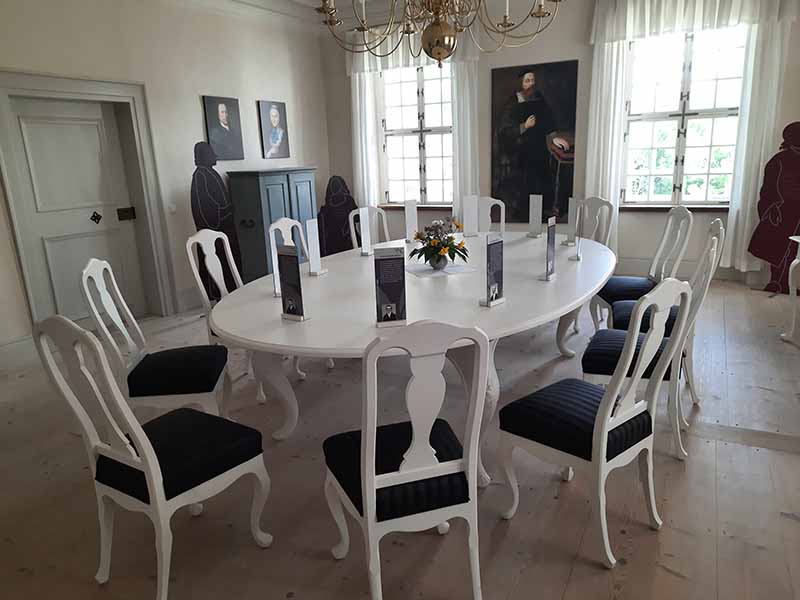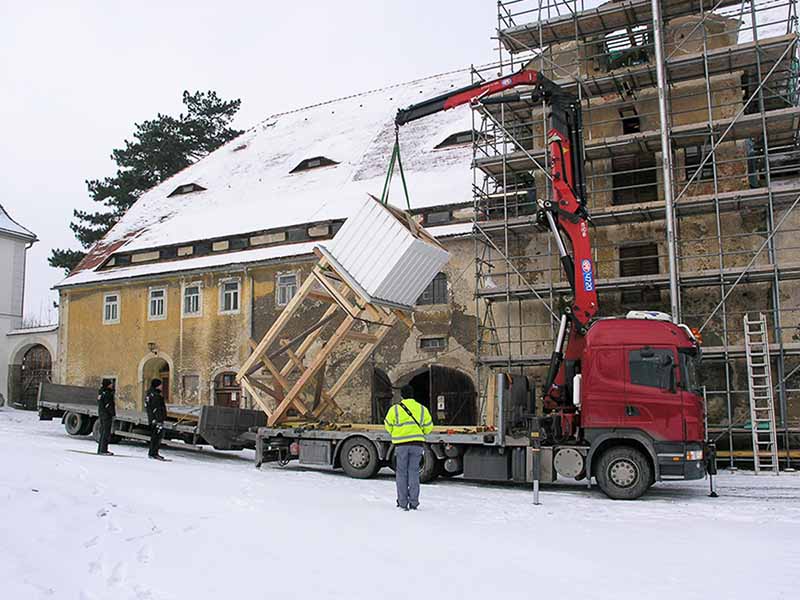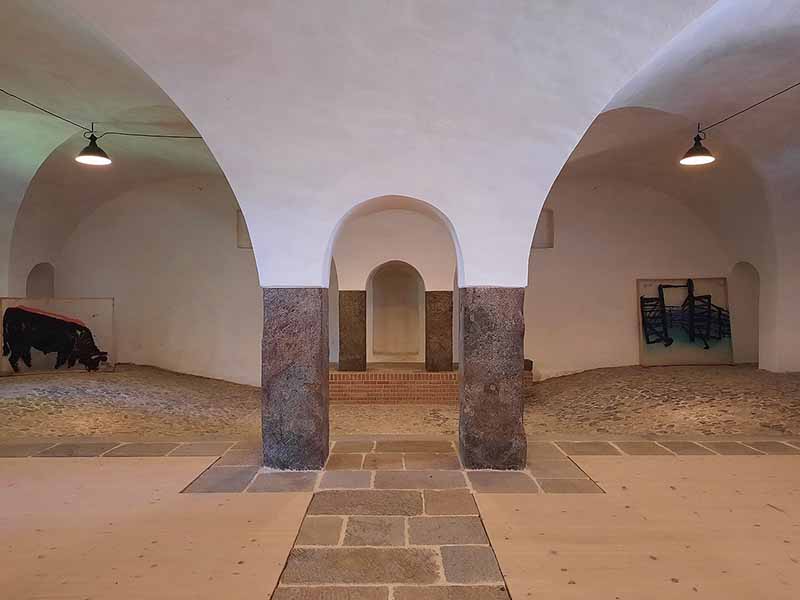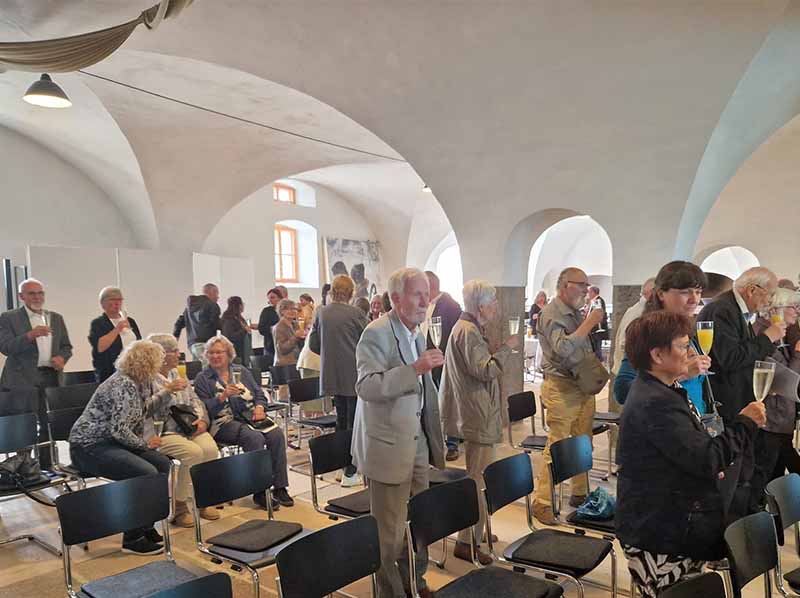When we filmed Zinzendorf in 2000, the historic home of the Count and Countess was in a tragic state of disrepair. During the years of Communist rule in East Germany, historic properties (especially those with religious associations) were allowed to deteriorate. The condition of the property was critical — the roof was ready to collapse, which would doom the building.
After the release of the documentary, many American Moravians became aware of the precarious condition of Zinzendorf’s historic home in Berthelsdorf. Comenius Foundation raised $10,000 for emergency repairs for the roof. This purchased the necessesary time to apply for grants, raise funds, and undertake a plan to restore the schloss.
The Zinzendorf-Schloss-Berthelsdorf Friends’ Association had been organized in 1998, and was able to acquire the estate in order to stop the decay of the castle, renovate it and revitalize it. The estate was recognized as a monument of national importance. The association and its friends were able to restore the castle with the support of the state, federal government, the EU, and various foundations.
Architect Daniel Neuer laid out detailed plans for the restoration. While many Baroque era castles are quite ornate, the Zinendorf schloss is unusual in its plain design. About 60% of the exterior facade plaster was able to be saved and structurally strengthened with silicic acid ester treatment. The other exterior plaster was recreated using historic techniques and local materials. Much of the work was caried out by Holzbau Gebrüder Pappe GmbH.
The interior baroque stucco ceilings on the upper floor had been preserved to varying degrees. The richly profiled ceilings were preserved from fragments. The baroque shapes had to be reproduced exactly. Technologically, the exact same structure was chosen as in 1721: cane fabric was applied as a plaster base over the supplemented softwood formwork and plastered in three layers on top. The base plaster layers were bonded with weak hydraulic lime (NHL 2), the fine plaster layer with lime mortar. The profiles were drawn in lime stucco with a low gypsum content. All materials were processed as a site mix and adapted to the situation on site.
The restoration took over a decade, but in 2012 the Zinzendorf-Schloss-Berthelsdorf Friends’ Association held a grand rededication of the schloss. Additional work was undertaken to restore the stables, which can now be used for concerts and the like.
Now, the historic castle attracts people from different countries, Christians and non-Christians alike. It brings very different people together. The history of the reconstruction is an exciting “turning point story”. Many people working together were able to rescue a ruin and restore it as an historic gem.
For more information about the schloss and the schedule of events, visit:

